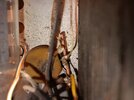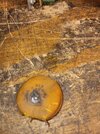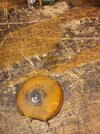You are using an out of date browser. It may not display this or other websites correctly.
You should upgrade or use an alternative browser.
You should upgrade or use an alternative browser.
-
You can now help support WorldwideDX when you shop on Amazon at no additional cost to you! Simply follow this Shop on Amazon link first and a portion of any purchase is sent to WorldwideDX to help with site costs.
Varmint xl 100
- Thread starter Staybolt
- Start date
Pics?Picked one up today and I found the large round ceramic cap between the transformer and tube looks bad. What's the value of this? And yes, before anyone says it yes I'm replacing the caps, lol. Always that one person.
at
No number markings on the old part at all? Just trying to figure out where each end of this capacitor is connected.
"between the transformer and tube" doesn't draw enough of a picture for me.
73
"between the transformer and tube" doesn't draw enough of a picture for me.
73
That cap appears to be wired to the AC line cord on one side, and to the chassis ground on the other side.
If I'm right, these are the "accidental surge suppressor" capacitors. This amplifier was plugged into the wall socket when lightning struck the electrical service outside the house. Surge voltage was high enough to scorch and fracture the cap. More often than not, the scorched capacitor now becomes a low-value resistor between the power cord and the chassis.
This becomes a shock hazard, especially since it was built with only a 2-wire power cord. No protective ground on the power plug.
Typical value for this part these days is .001 to .002uf, or 1 to 2 nf (nanofarads), or 1000-2000 pf (picofarads). Capacitor marking standards are all over the place. A capacitor rated for line-cord use tends to have the logo of more than one standards outfit on it, like UL, RU, etc. The original disc cap may be marked with a higher capacitance value. Bad idea.
At the very least I recommend clipping a capacitor with visible damage out of the amplifier. It was meant to filter RF from leaking out the line cord into the room. A good idea, but not necessary to make it key up and deliver wattage.
73
If I'm right, these are the "accidental surge suppressor" capacitors. This amplifier was plugged into the wall socket when lightning struck the electrical service outside the house. Surge voltage was high enough to scorch and fracture the cap. More often than not, the scorched capacitor now becomes a low-value resistor between the power cord and the chassis.
This becomes a shock hazard, especially since it was built with only a 2-wire power cord. No protective ground on the power plug.
Typical value for this part these days is .001 to .002uf, or 1 to 2 nf (nanofarads), or 1000-2000 pf (picofarads). Capacitor marking standards are all over the place. A capacitor rated for line-cord use tends to have the logo of more than one standards outfit on it, like UL, RU, etc. The original disc cap may be marked with a higher capacitance value. Bad idea.
At the very least I recommend clipping a capacitor with visible damage out of the amplifier. It was meant to filter RF from leaking out the line cord into the room. A good idea, but not necessary to make it key up and deliver wattage.
73
Good choice. Just be sure to also install either a fuseholder or a circuit breaker. The factory fuse protection was inside the AC line plug ONLY. The brand name on that plug was "Eagle", and contained two fuses, one each in line with both sides of the AC line. Oddly enough, this plug seemed to provide a measure of protection from lightning surge. But the lack of that third-prong ground is still an unnecessary risk.I'm also thinking of installing a 3 wire cord
The 80uf and 100uf rating on those caps are interchangeable. You won't be able to tell any difference if you change from one to the other. Had a conversation with the sales rep for Sprague products decades ago. Asked him why they listed both values. Seemed more logical to offer only the 100uf part. His reply was that people would ask for them, so this was the reason to label their 100uf cap as "80". Never was a difference on the inside with his brand cap, just the marked value. The percent tolerance on those parts was so wide that this didn't affect the accuracy of the claimed capacitance.
73
I haven't seen a dual capacitor in many a year.....last one was in a 1960s TV I believe. an EMI filter.....I think?Here's the cap I clipped out. It has 3 legs.
Last edited:
3 legs. One to ground and one to each side of the AC power line. This device is actually built from two capacitors, with one leg of each joined together in the middle.
Typically replaced with two separate disc capacitors, one from each side of the AC line each to ground.
Simply clipping it out will remove the shock hazard it risked. Should not affect how the amplifier operates. Might cause more interference to other electronic stuff nearby, but that's the worst risk.
But only if there is a fuse in line with the power cord. If not, THAT becomes the greatest risk, of setting it on fire.
73
Typically replaced with two separate disc capacitors, one from each side of the AC line each to ground.
Simply clipping it out will remove the shock hazard it risked. Should not affect how the amplifier operates. Might cause more interference to other electronic stuff nearby, but that's the worst risk.
But only if there is a fuse in line with the power cord. If not, THAT becomes the greatest risk, of setting it on fire.
73
dxChat
- No one is chatting at the moment.
-
-
dxBot:63Sprint has left the room.
-
dxBot:kennyjames 0151 has left the room.
-
-



